There's a key line of play in the Prism handbook that goes like this:
- See an opponent play a non-attack buff- or better yet, crack an equipment.
- Drop Arc Light Sentinel on them, preempting their major attack.
- Profit.
(I didn't say it was a complex line of play.)
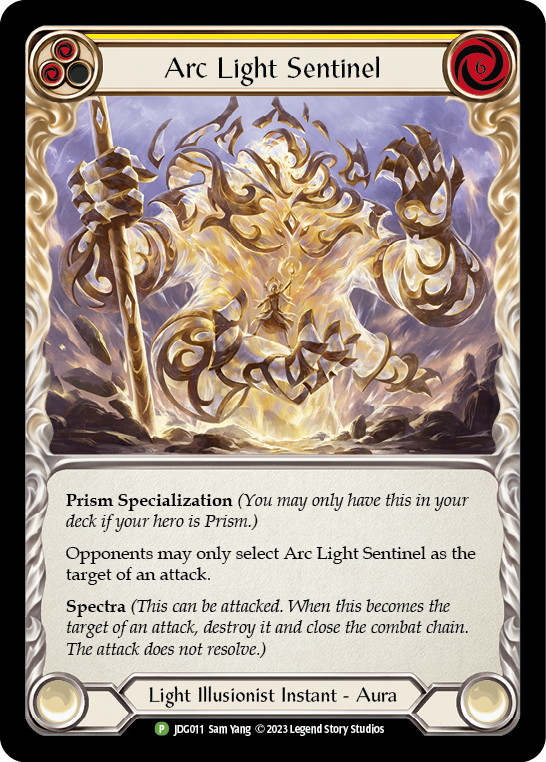
In the days of Monarch, when Prism and her Arc Light Sentinel first arrived on the scene, this was arguably the most disruptive play in the game. It was capable of ruining carefully assembled combos, after critical pieces had already been committed to them. That Dominate from Bravo with 3 blues and a Crippling Crush was now a window of opportunity; the Barraging Beatdown didn't even have the chance to resolve before Arc Light Sentinel spent the hand on ruining it.
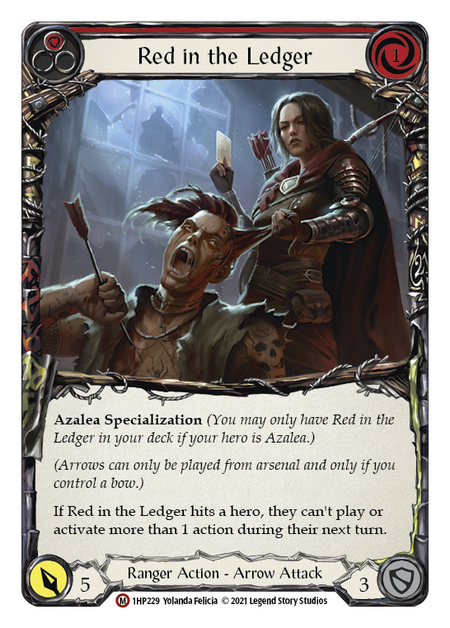
Outside of that, however, disruption was played with much more advance warning. A well-timed Red in the Ledger might render your wide Kodachi-led turn impotent, but at least you knew that in advance and could attempt to make the best of it by following a different line of play or simply holding the cards for the next turn.
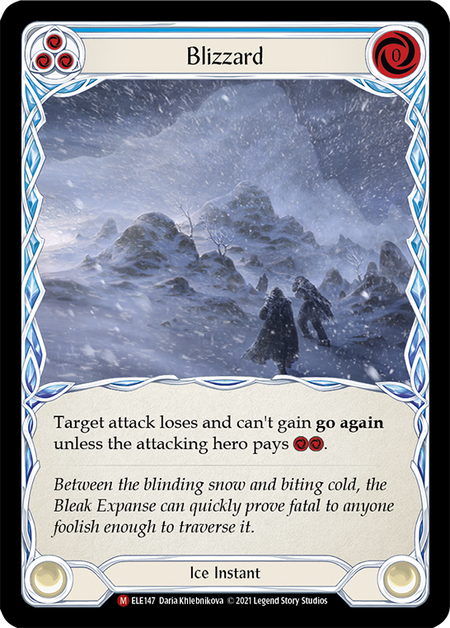
Tales of Aria introduced a much heavier disruption gameplan with the Ice talent, but for the most part these cards followed the established rules of disruption primarily in advance of the action. Blizzard was a notable exception; played at instant speed, it could strip go again from the opening attack of an intended chain, effectively ending the turn before it had really begun. But we had only gotten a taste of the plans LSS had for Ice.

Everfest introduced Iyslander to the game, giving us time to get used to this new disruptive force before Uprising fully developed her into a major meta contender. Thanks to her ability, Ice-based disruption needs to be considered any time a card is sitting in her arsenal. The impacts of her cards vary from cost increases to discard effects to freezing you out of accessing your on-board cards. And as a Wizard, there's plenty of arcane damage to consider as well.
While disruption exists across many classes, it is most concentrated in Iyslander's card pool. To talk about safeguarding yourself against the worst disruption effects in the game, one must begin and end in the Bleak Expanse.
Begin with the Build
The most prevalent form of disruption in the game is cost increases, thanks to the ubiquity of Frostbite. But even before we all added Frostbite to our token boxes, cost increases were found in the card pools of the two classes who built their identities on adverse hit effects: Guardian and Ranger.

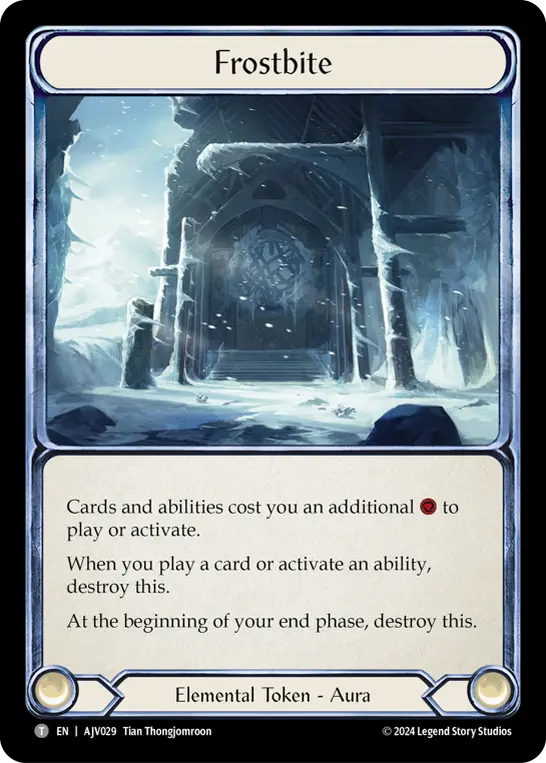

Some decks can weather a small increase in a card's cost, and some can't. The increase from 1 cost to 2 is easily absorbed in a Warrior deck- it usually means one less attack reaction that turn, or perhaps skipping on a Braveforge Bracers activation- but for a red-lining 'cheerios' Briar deck (named for being built entirely around 0-cost cards) it means an entire attack is now a pitch card.
There's an easy way to prepare your deck for this during deck construction, but it may mean taking a hit to your efficiency: increase your resource curve. In fact, many Classic Constructed decks are built with a suite of higher-pitch cards in their sideboard precisely for these icy matchups.
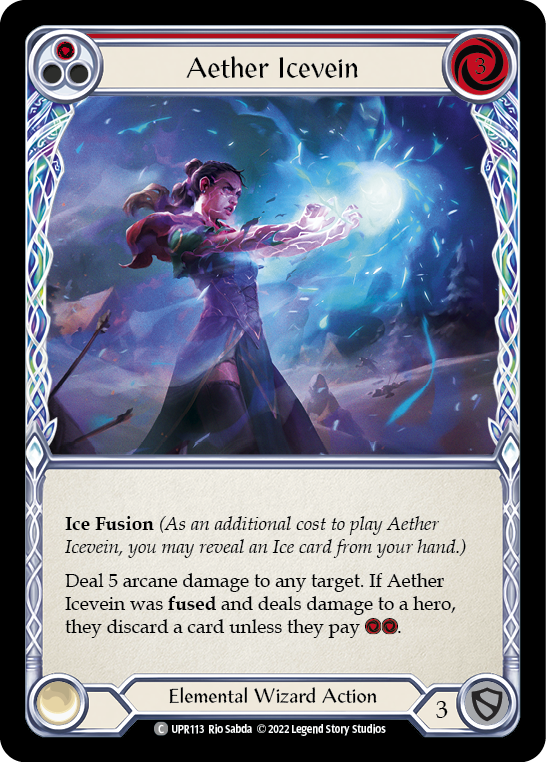

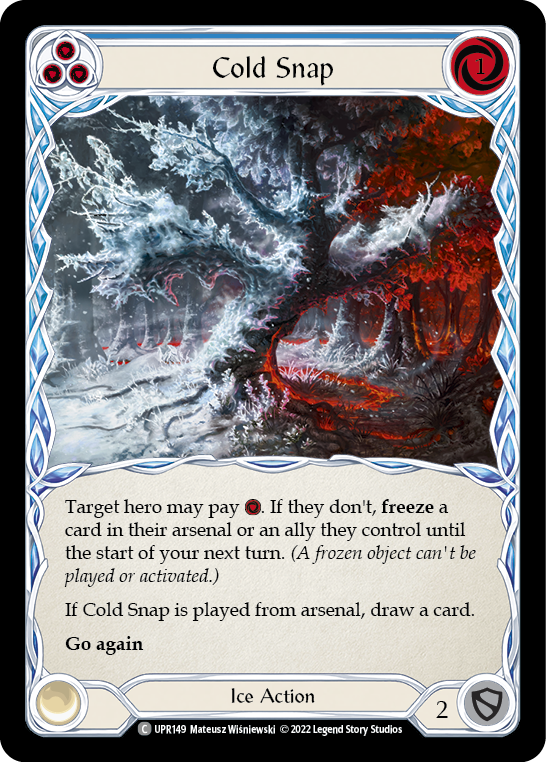
Additionally, increasing our pitch curve can give us extra pitch to spend on cancelling many of Ice's other disruptive effects. Most notably, many of the cards that force a discard offer an alternative of paying resources; while sometimes you'd rather the card didn't cycle back into your deck, many times you can avoid multiple discards with a simple blue pitch.
But before you go swapping in a bunch of blues, think carefully about what your deck is trying to do. Are you lowering the lethality of your core strategy for the sake of one bad matchup? To go beyond that, are you trading an advantage you should be pressing for a meager improvement in defenses?
As an example, a Draconic-focused Fai deck will be, by nature, extremely red-focused, and thereby susceptible to cost disruptions. I have two choices: diverge from the core identity of the deck, or aggressively force my strategy on them in hopes that their disruption becomes ineffective in the face of pressure. The correct choice is relatively obvious- Fai must do what Fai was made to do and press forward, accepting the occasional 'ruined turn' as a cost of playing a wide, aggressive Draconic strategy.
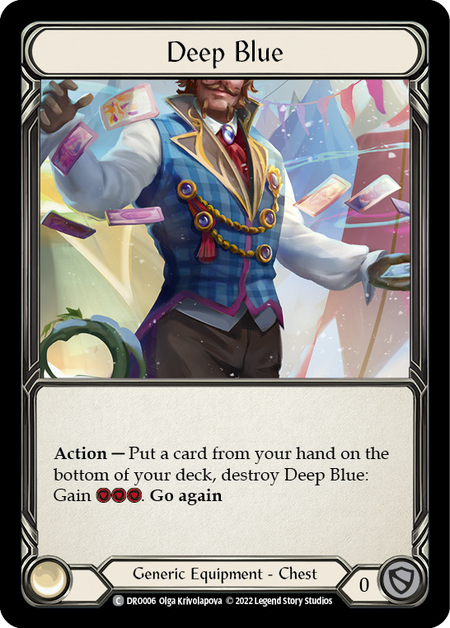
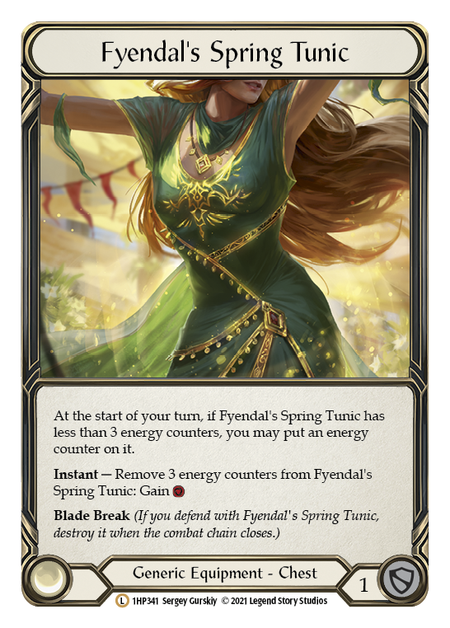
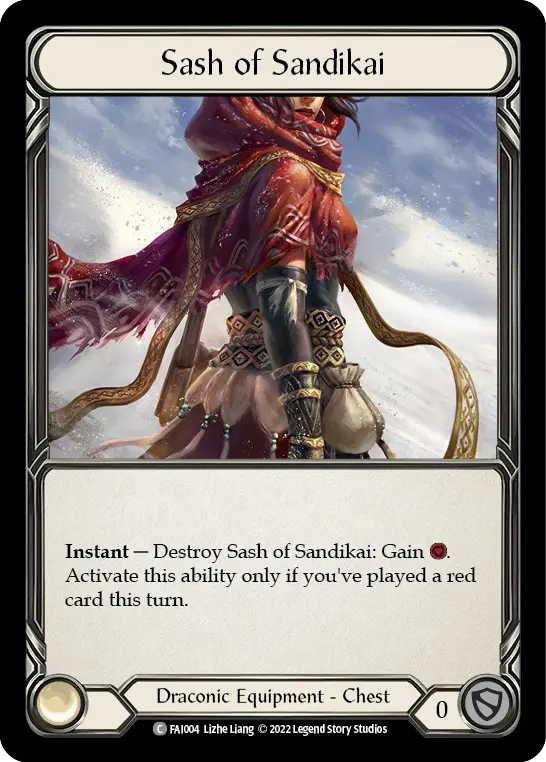
This brings us to another way we can deck build for cost disruption: via equipment. There are many reasons Fyendal's Spring Tunic is a timeless classic, but it's especially notable here because it gains a resource as an Instant, rather than an action; as such, it's a rare workaround for having to pitch something to clear Frostbite. That 'cheerios' Briar we talked about before? With Spring Tunic, you can now pay the 1 resource that Frostbite requires without pitching a card.
Resource-gaining equipment is similarly important to decks with delicate pitch costs. Brutes, for example, can struggle to pay the dual costs of their attacks: a pitched card and a discarded card. Add in the extra cost of a Frostbite, and Rhinar has to fall back on the Romping Club more often than he'd like to! Because of this, it may be in Rhinar's best interest to bring a resource-generating chest equipment to get out of an icy situation.
Anticipate the Disruption
In order for Iyslander to play a disruptive blue non-attack from arsenal, she needs priority. And during your turn, the first opportunity your opponent has to play a card at instant speed is after you've used an action point on something (excepting an Instant of your own- but we'll set aside that corner case with a simple 'or played a card' clause).
Think back to the example we opened with. Bravo's Crippling Crush gets around Arc Light Sentinel simply by *not* taking any actions before it's played. Triggering Bravo's ability to give the next attack Dominate created a window for disruption and ruined the turn. Knowing that's a risk, therefore, Bravo should play into Prism without relying on Dominate (or any other attack-boosting actions) to avoid having his attack windows closed on him.
In some decks, that's not an option. Azalea takes several actions every turn just to fire one optimized arrow; obviously, we can't just skip loading her arsenal with her bow. And pistol Dash needs to put steam counters on her weapon and items before the pew-pew can begin.
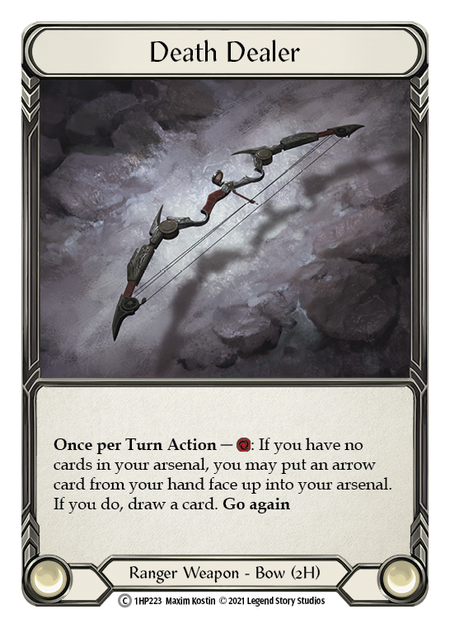

In these cases, the best thing you can do is plan two paths through your turn wherever possible. If you have a card that you'd like to play, but could give you extra resources if pitched, try not to play it out first. That Nock the Deathwhistle may set up an incredible dominated arrow with the perfect on-hit to ruin your opponent, but if you can't afford the steps that follow, you're just passing your turn and drawing a good hand for next time. If it comes down to discarding 2 cards or pitching 1, you'll be grateful that blue card is still in your hand.
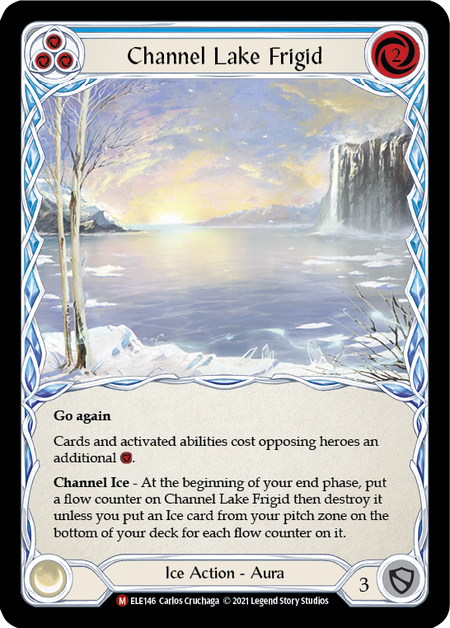
We can't go any further here without addressing the ultimate disruption card: Channel Lake Frigid. The example above- in which a Nock the Deathwhistle in hand became Azalea's salvation- legitimately happened to me on a turn with CLF coming out of arsenal. Because I began with Death Dealer's action, I still had Nock in hand when the Lake froze over; I spent 5 resources on cards and effects that were usually free, still sending 8 dominated damage across the table. If you have the option available, always hold extra pitch in hand until you're sure you can execute your plans!
Keep on the Pressure
There's a more proactive option available as well: don't give them enough breathing room to waste cards and resources on disrupting you. When you're in control of the game's tempo, those disruptive tools end up hitting the table as blocks instead. And if they insist on riding out the damage to forward their own game plan? Make them bleed for it.
This is most effective when your deck is pursuing a wider go-again strategy. While the space between attacks opens you up for disruption, it also keeps them guessing as to where and when it's safe to block- and whether a partial block is worth anything at all!
These can be some of the most compelling games- or the most lopsided. If the momentum doesn't tilt strongly to one side, the back-and-forth of attack and counter, the do-they-have-the-right-card, can be highly rewarding. Often it comes down to a do-or-die finish, with many turns where the aggro narrowly forced their turn through against a string of disruptions- and others where the counter came at a critical juncture and the whole turn collapsed.
It's hard to walk away from a loss to a disruption deck with confidence in your strategy, but these games go sideways as often as they end in glorious victory. If your deck's best chance at the win is to push forward aggressively, then do it! You can't make your deck do something it's not built for, nor should you try.
The Wizards' Duel
The popularity and viability of Wizards has never been higher, which leads us to one final note: disruption isn't really disruptive if you can respond before it resolves. This is often the case in Wizard vs. Wizard matchups. Iyslander may reveal Channel Lake Frigid from arsenal, but that leaves you a window to respond with an instant-speed play of your own before the Frostbite and Channel taxes hit you. The key is to remember that phrase: "before it resolves."
Of course, you may want to let a few Frostbites resolve before you respond, if you can afford to pay for them anyway. After all, Iyslander would rather save them for the end of your turn anyway.
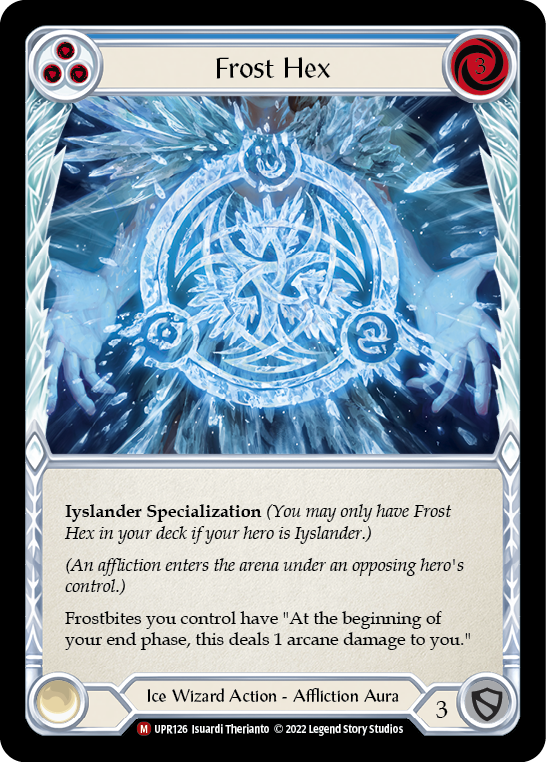
Don't Let It Bog You Down
If you find yourself on the receiving end of an ice-over, don't beat yourself up over it. Iyslander's disruption game is unlike anything FAB has ever seen, and we're all adjusting to it. Some decks have an easier time of that than others. Learn the signs of disruption coming your way, and consider if any changes to your decklist might put you in a better position next time. If all else fails, the time-honored strategy of 'dodging the bad matchup until Top 8' is perfectly valid- if a little unreliable!






